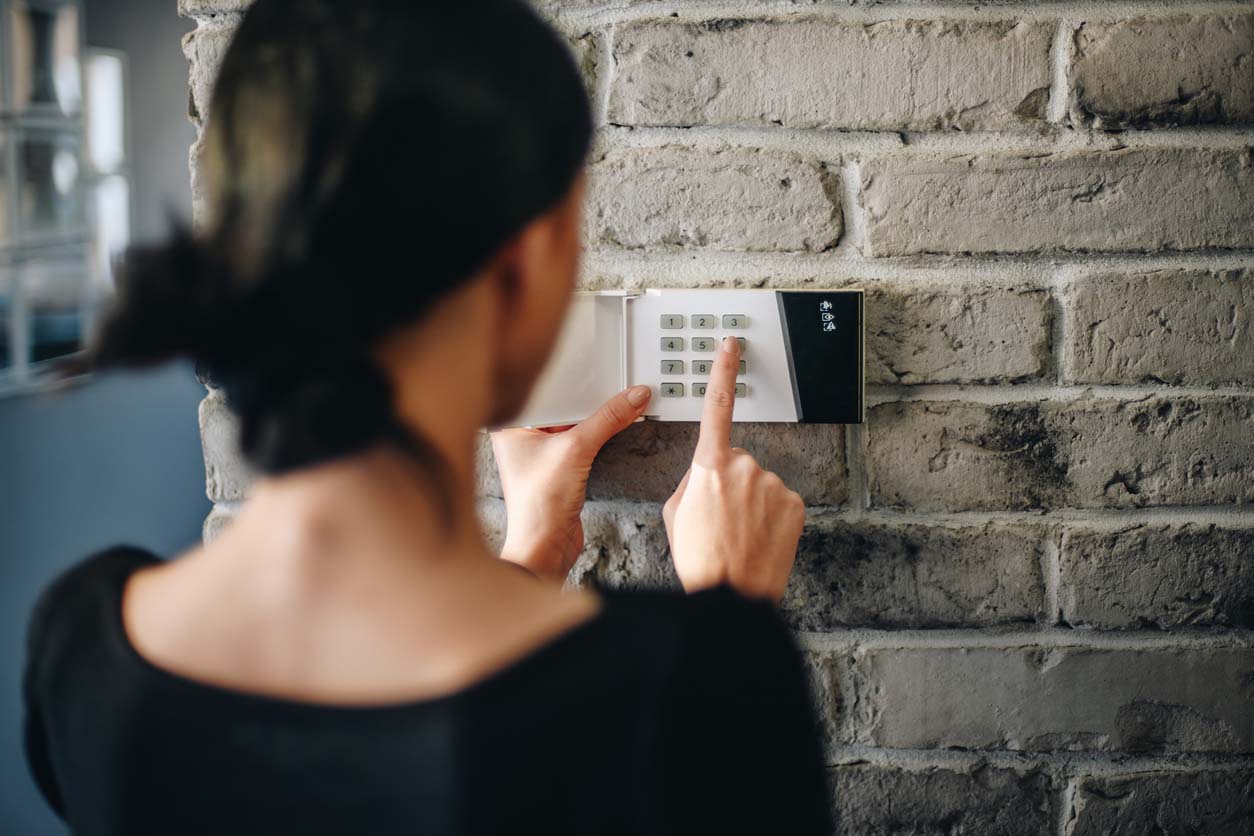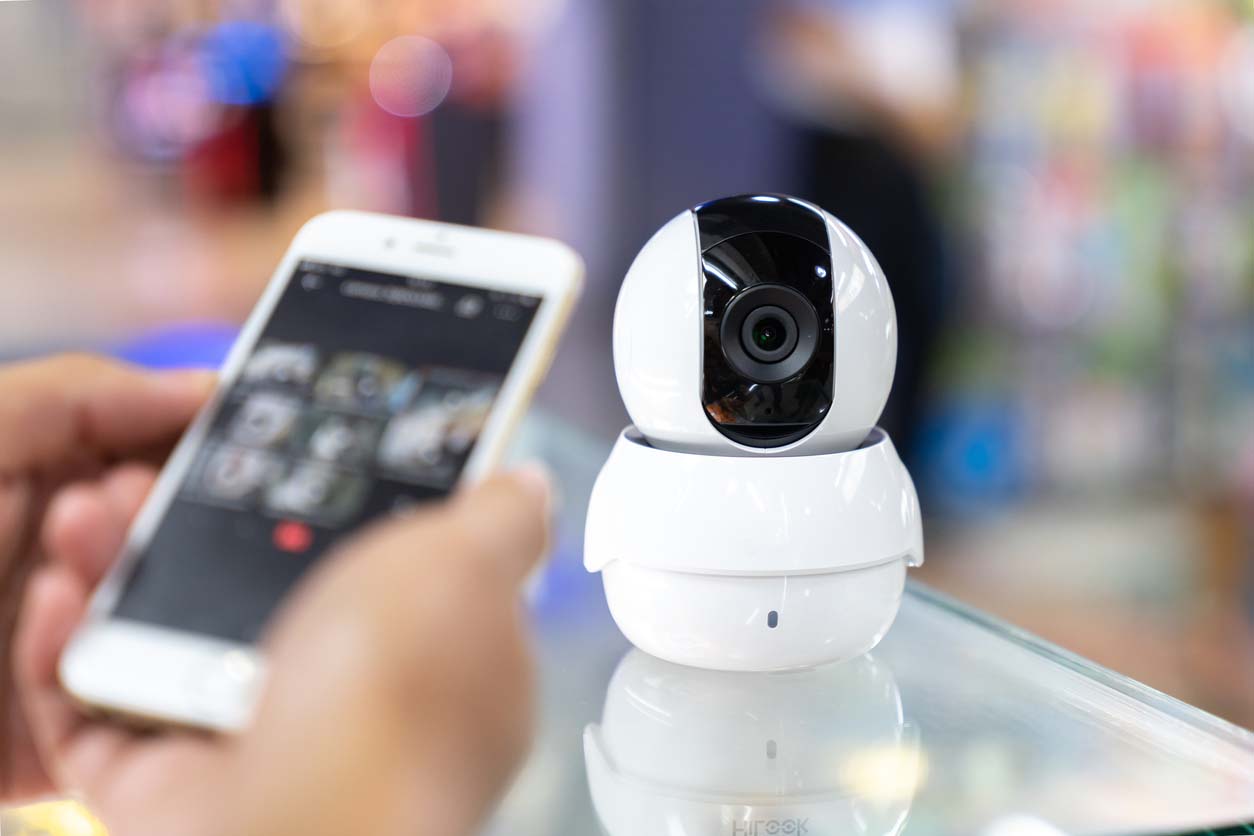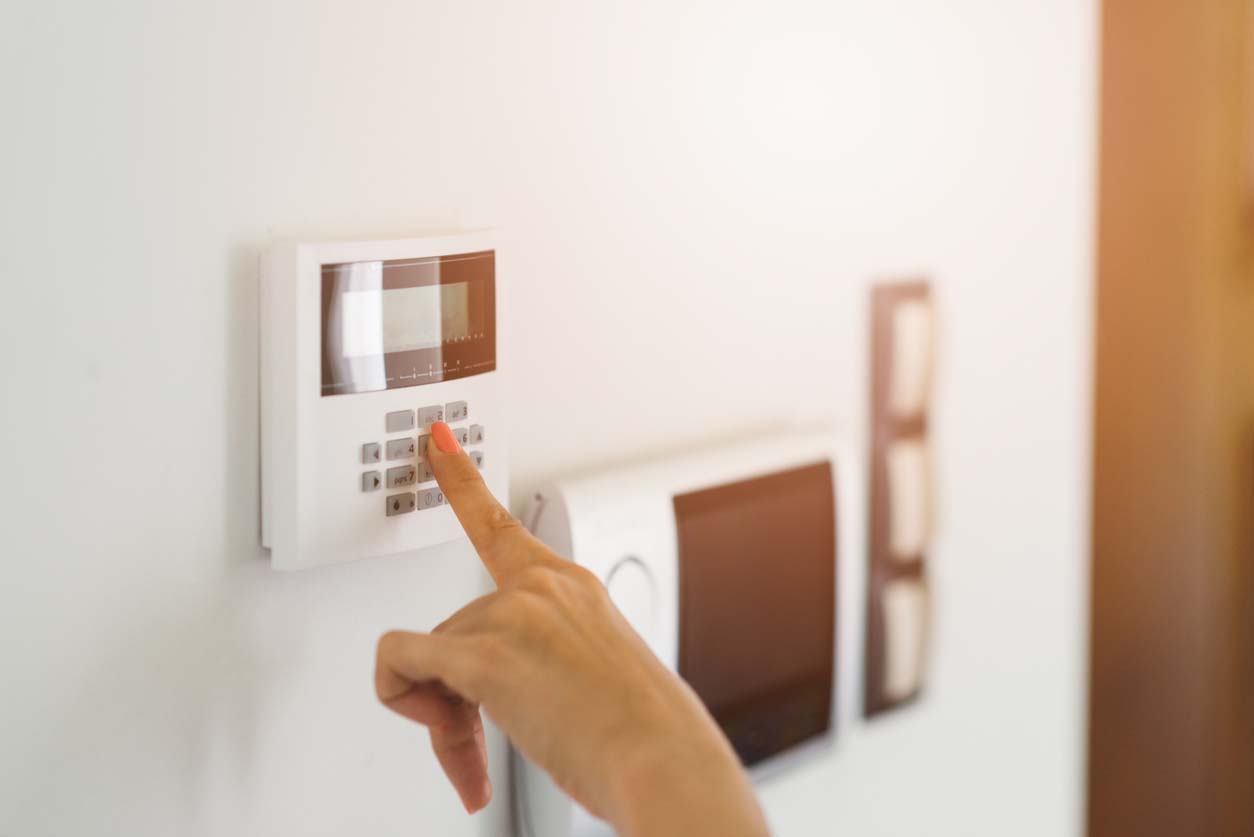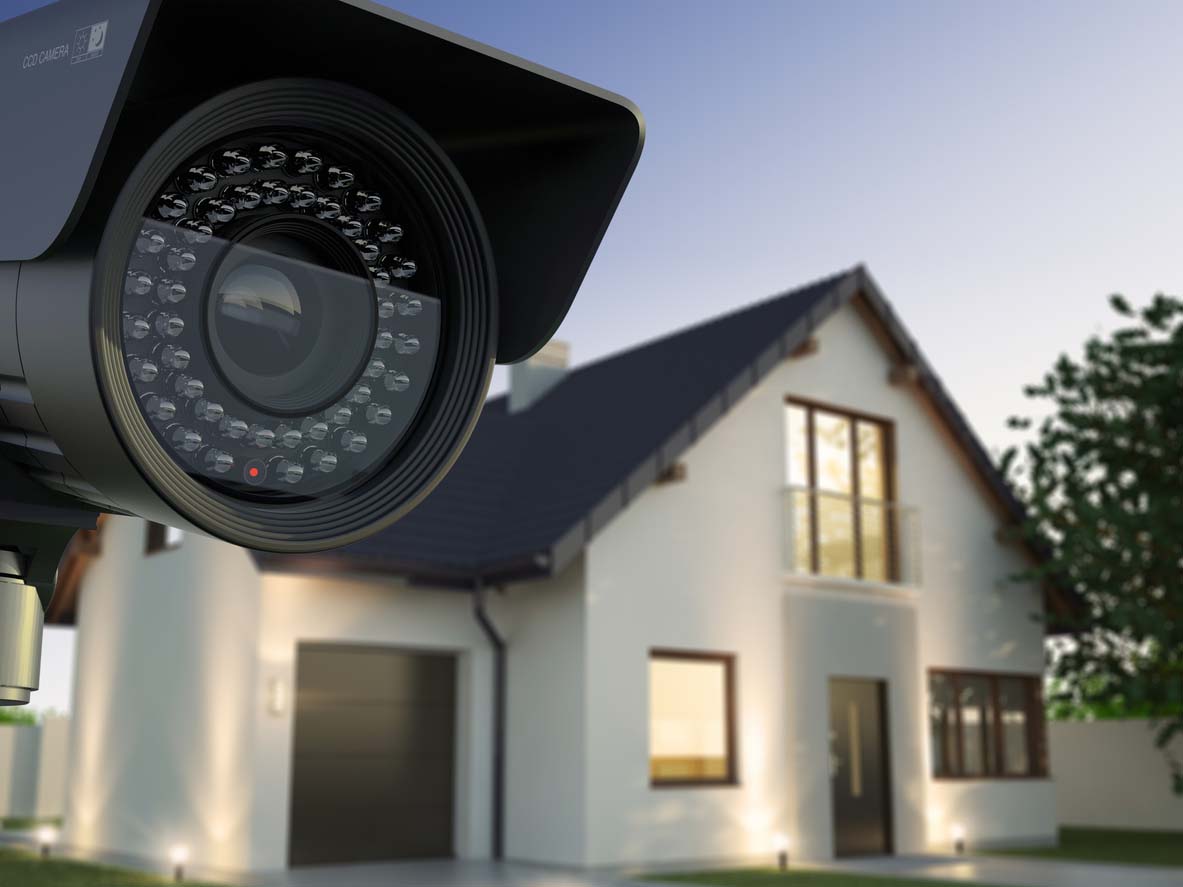We may earn revenue from the products available on this page and participate in affiliate programs. Learn More ›
Both Vivint and ADT are fantastic options for home security; in fact, Vivint and ADT are often considered two of the best home security companies overall. Vivint packs in a lot of bonus features, too, like a Z-Wave receiver for easier smart home integration, while ADT comes with years of outstanding reputation.
Since both rank among the top alarm companies, deciding between ADT vs. Vivint can be quite the hurdle. The key lies in figuring out which of the two is best suited for a home’s particular needs.
Editor’s Note: Prices listed in this article are accurate as of the last update, but may vary. For the most up-to-date costs, please see Vivint’s or ADT’s website.
How We Compared Home Security Systems
The best home security systems all have a few things in common: a great reputation, solid equipment options, and an intuitive user experience. We looked at these unifying parameters to make fair, objective evaluations of each company.
- Reputation: Institutions like the Better Business Bureau (BBB), Consumer Affairs, and Trustpilot give customers a voice by allowing them to leave security system reviews. A company’s reputation says a lot about what customers can expect when working with that company.
- Equipment options and quality: Every security company offers different equipment. It’s important to know what types of security equipment (cameras, motion sensors, etc.) a company offers, as well as how long that equipment will last.
- Packages and plans: No two customers have the exact same budget. A company that offers customizable plans to accommodate more budgets is objectively a better pick than one with strict, inflexible options.
- Pricing and fees: Outside the cost of equipment, home security companies often have monthly subscription fees for professional monitoring and other services. A customer’s understanding of these fees is vital in helping them make a decision about which company’s services to use.
- Installation: While many people are comfortable installing their own security equipment, others prefer to leave it to the professionals. Home security companies will ideally offer both options, or at the very least, affordable installation fees.
- Monitoring: Professional monitoring is what sets a home security system apart from a collection of security cameras. Knowing that a home is protected and watched at all times provides a customer with value and peace of mind.
- App user experience: There are as many different apps as there are security companies, and each one varies with regard to user experience. Someone with no knowledge of an app needs to be able to pick it up and figure out how to view each piece of home security equipment, as well as arm or disarm the system. The app should also make it easy to view alerts and warnings.
- Contracts and trial period: A security system that seems perfect on paper might not work as well in day-to-day use. Providing customers with a sufficiently long trial period is the mark of a great company, as it gives them time to evaluate whether the system adequately meets their needs. Additionally, a contract can be a pro or a con for a customer, depending on their needs.
- Warranty: No matter how well manufactured a security system is, there’s always the risk of something breaking or going wrong. Manufacturers’ defects can sometimes result in weird bugs, but these glitches might not become apparent right away. A warranty should be long enough that it protects customers against the potential of system failure.
- Home automation and device compatibility: In the modern world, a home security system isn’t just about keeping the home safe; it’s about adding more convenience to daily life. Systems that double as smart-home setups provide more value for the same cost.
1. Vivint vs. ADT: Reputation and Customer Reviews

Vivint security is known as one of the best professionally installed and monitored home security systems on the market and has an outstanding score of 3.4 out of 5 on Trustpilot after more than 31,000 Vivint reviews. The company also boasts an impressive score of 4.7 out of 5 on Consumer Affairs. Vivint actively seeks out reviews and responds to both positive and negative reviews; for the latter, Vivint offers assistance and tries to correct any issues customers might have. This suggests that the company is willing to work with its customers to help ensure they have a good experience while using their Vivint security system.
ADT home security is also a recognizable name in the industry with a generally positive reputation to go with it. While ADT reviews on Trustpilot give the company a rating of 1.2 out of 5, ADT also has far fewer total reviews than Vivint with just over 3,800 at the time of writing. Although it’s important for customers to bear in mind that many people only leave reviews when they’re unhappy, there are common threads among the negative reviews, especially with regard to ADT customer service. That said, ADT responds to 95 percent of negative reviews, usually within 24 hours, suggesting that the company is willing to work with dissatisfied customers to help improve their experience. ADT’s Consumer Affairs rating of 4.6 out of 5 is much more positive with almost 15,000 reviews.
Verdict: Vivint and ADT are both major players in the home security industry, but Vivint’s high number of positive reviews on sites such as Trustpilot give it the edge when it comes to reputation.
Winner: Vivint
2. Vivint vs. ADT: Equipment Options and Quality
When it comes to home security, it’s important for customers to know what to look for in their home security camera system. This starts with determining the type and amount of equipment the customer needs for their home.
Vivint is well regarded for its wide selection of high-quality equipment. The company offers proprietary equipment that brings more features to the table than some of its competitors, but it can come at a higher cost. That said, since Vivint produces all of its equipment in-house, the different pieces—from its Doorbell Camera Pro to its Glass Break Detectors—all seem to be catered specifically to the system, especially with Vivint’s smart-home offerings.
A basic Vivint home security package includes the touch-screen Vivint Smart Hub, which is the main control panel for the system and allows customers to arm and disarm their system, watch live camera feeds, lock and unlock doors, open and close the garage, and even speak to Vivint customer service directly. From there, customers can add cameras (indoor, outdoor, and doorbell), smart- home devices (smart locks, a Vivint thermostat, and smart plugs), hazard detectors (a combined smoke/carbon monoxide detector and water sensor), and security sensors (window and door sensors, motion sensors, and glass-break sensors). No matter the specific equipment chosen, customers can rest assured that everything is designed to work seamlessly together, making it easy for them to manage and control their home security.
Like Vivint, ADT has steered toward the modern smart home and offers cameras, safety sensors, and more, but the company’s equipment is also compatible with outside companies like Google Nest (ADT doesn’t have its own brand of ADT cameras or smart systems like Vivint does). Customers can choose between wired and wireless security cameras for their ADT system.
Similar to Vivint, a basic ADT security system comes with a digital touch-screen panel that allows the customer to manage every aspect of their home security system from one central location, as well as an ADT sign for the yard to let would-be intruders know that the house is protected. Customers can choose the appropriate number of entry sensors and motion detectors and add on smart and video features to round out their system. Equipment options include Google Nest cameras (indoor, outdoor, and doorbell), hazard sensors (smoke, carbon monoxide, and floor detectors), and smart-home features (Google Nest thermostat and hub, smart locks). This gives customers numerous customization options that allow them to design their own system almost from the ground up.
Verdict: ADT and Vivint both offer high-quality equipment and a long list of pieces to choose from, including cameras, door and window sensors, and smart-home devices. However, Vivint has slightly more to choose from, which can appeal to a wider variety of customers.
Winner: Vivint
3. Vivint vs. ADT: Packages and Plans
Vivint offers two basic security packages: the Premium Package and the Premium Plus Package. While the equipment options go up incrementally with each option, the main difference lies in the features and security options that Vivint offers. However, if customers don’t see a package that fits what they’re looking for, they can call Vivint to get a quote and build a package from scratch. Vivint’s basic package information is as follows:
- The Premium Package includes the Vivint Smart Hub Control Panel, a Vivint doorbell camera, an outdoor Vivint camera, a smart lock, and a key fob.
- The Premium Plus Package mirrors the Premium Package but adds an indoor one camera, a smart thermostat, and a smart garage door controller.
ADT also offers three packages: the Build Your Own Package, the Smart Home Package, and the Video & Smart Home Package. The names are self-explanatory, and each one acts as a starting point for a customizable system.
- The Build Your Own Package is designed to be a build-your-own package and comes with a digital touch-screen panel, three entry sensors, and one motion detector. Customers can then add extra equipment as needed.
- The Smart Home Package adds a smart door lock to the equipment from the Build Your Own package.
- The Video & Smart Home Package has everything in the Smart Home Package, plus one Google Nest camera of the customer’s choosing (outdoor or indoor) and a Nest doorbell.
Finally, ADT offers three DIY packages under its Self Setup umbrella (previously called Blue by ADT): Build Your Own, Starter, and Premium.
- The Build Your Own Package comes with one ADT Smart Home Hub, an entry sensor, and access to the ADT+ app. From there, customers can add the specific equipment they want in their home security system.
- The Starter Package includes everything in the Build Your Own package, but increases the number of entry sensors to two and adds a Google Nest doorbell.
- The Premium Package includes everything in the Starter Package but adds two Google Nest cameras, a smoke detector, and a flood and temperature sensor.
Verdict: Both Vivint and ADT offer three equipment packages and the ability to add on equipment as needed. Vivint also offers fully customizable packages, as well as unique automation equipment to allow customers to tailor their system to their needs.
Winner: Vivint

4. Vivint vs. ADT: Pricing and Fees
Home security cost is one of the major factors customers will want to consider when choosing a security system. Vivint may offer great equipment and packages, but it comes at a relatively high cost. The cost of a Vivint equipment package ranges from $1,478.96 to $2,379.92, though customers have the option of financing their system over a 5-year period if they don’t want to pay the full amount up front. That’s pricey, but the quality of the equipment makes it worthwhile for many customers. The total costs and monthly costs for each package can be found in the table below.
| Equipment Package Name | Monthly Cost | Total Cost |
| Premium Package | $24.65 | $1,478.96 |
| Premium Plus Package | $41 | $2,479.92 |
Customers will also need to factor in the cost of monitoring when considering Vivint pricing as well as the installation fee. A Vivint price comparison can help customers see whether the company’s equipment and plans will meet their budget needs. The exact costs for monitoring will depend on the type of equipment the customer has in their package. The following table breaks down the company’s monitoring plan costs.
| Monitoring Plan Name | Monthly Cost |
| Smart Home Monitoring | $39.99 |
| Cell network maintenance fee | $1.48 |
| Video service | $5 per camera |
Using the costs above, Premium Package customers will pay $51.47, and Premium Plus Package customers will pay $61.47.
How much is ADT a month, or overall? ADT’s costs are comparable to Vivint’s, with the base equipment package starting at $599 and the option to pay in full up front or in monthly installments. The Secure Home package has limited equipment, so most customers will want to add more equipment to their system, thereby increasing the price. The following table breaks down the costs for each package, with monthly costs reflecting a 60-month financing plan (there are also 36-month and 24-month financing options, which will increase the monthly cost).
| Equipment Package Name | Monthly Cost | Total Cost |
| Build Your Own | From $9.98 | $599 |
| Smart Home | From $14.15 | $849 |
| Video & Smart Home | From $23.12 | $1,387 |
ADT requires customers to pay for its Self Setup equipment packages in full at the time of purchase—there’s no option to finance the equipment like there is with the professionally installed ADT packages. However, the cost of Self Setup packages is lower than the cost of traditional ADT packages, so paying in full will likely be easier for customers. The cost of each equipment package is as follows.
| Equipment Package Name | Total Cost |
| Build Your Own | $194.98 |
| Starter | $389.96 |
| Premium | $744.92 |
ADT monitoring costs depend on the equipment package the customer chooses. All packages get Essential Monitoring and the Quality Service Plan for a base cost of $44.99. The Smart Home and Video & Smart Home packages are subject to extra charges based on the added equipment. The exact costs are broken down in the table below.
| Monitoring Plan Name | Monthly Cost |
| Essential Monitoring | $38.99 |
| Smart Home | $4 |
| Video Security | $14 |
| Quality Service Plan | $7 to $9 (depending on equipment) |
| ADT Self Setup professional monitoring | $24.99 to $34.99 |
Verdict: Vivint and ADT have similar overall costs, but they are distributed differently; ultimately Vivint offers more bang for the buck.
Winner: Vivint
5. Vivint vs. ADT: Installation
Despite all of its features and equipment (or perhaps because of those), Vivint doesn’t offer a DIY installation option. Customers have to rely on professional installation, which is $99 for the most affordable option. The exact installation cost will depend on the monitoring plan chosen by the customer—the smart-home and video monitoring plans will have more equipment to install, thus the higher price. There are many benefits to professional installation; a pro knows exactly where to place security cameras for the best view of the home’s main areas.
ADT also offers professional installation, which costs around $150. That installation fee is folded into the equipment cost, allowing customers to pay for installation over 24, 48, or 60 months if they choose to finance their equipment. ADT also has a DIY option called ADT Self Setup, which allows customers who know how to install security cameras to install their systems on their own, saving money on security camera installation cost and adding more convenience. While customers can rest easy knowing a system is installed properly with professional installation, many people would prefer to do it themselves and reduce the overall cost of a system. ADT offers more choices for customers to pick which installation method makes the most sense for them.
Verdict: Vivint and ADT both offer the convenience of professional installation, but ADT also has a DIY setup option, which makes it appealing to a wider range of customers.
Winner: ADT

6. Vivint vs. ADT: Monitoring
Both Vivint and ADT offer professional monitoring services with no unmonitored or self-monitoring options available. Although this may seem like a disadvantage for those who prefer the self-monitored option, a system with professional monitoring could get the customer a home insurance discount for their security system. Customers will get a monitoring plan specifically designed for the system and devices they choose, and each monitoring plan has varying services and features. Vivint’s professional monitoring plans include the following:
- Monitoring for the Premium Package includes 24/7 professional monitoring, mobile access, hazard monitoring, medical pendant support, and smart-home integration.
- Monitoring for the Premium Plus Package adds video surveillance to the features of the Premium Package’s monitoring plan.
ADT’s three main monitoring options are based on the equipment package chosen by the customer. The monitoring plan has a base cost, and there’s an additional fee added for smart-home and/or video monitoring. In addition, ADT Self Setup has one professional monitoring plan. The plans are broken down as follows:
- The Secure Home Monitoring plan includes 24/7 professional monitoring and hazard monitoring and detection.
- The Smart Home Monitoring plan adds a remote arm and disarm function, smart-home controls, and customizable alerts and automations.
- The Video & Smart Home Monitoring plan includes live streams from mobile devices and the ability for customers to record and save video clips.
- ADT Self Setup has a 24/7 professional monitoring service for all equipment packages.
Verdict: Both services offer reliable monitoring, but Vivint wins out: Not only is the monthly cost typically lower, but customers are not locked into a contract like they are with ADT.
Winner: Vivint
7. Vivint vs. ADT: App User Experience
Both companies offer smartphone apps on Android and iOS, making it easy for customers to access their systems, view live feeds from the cameras, and more. While ADT offers several apps, Vivint combines similar features under one single app, which makes it the more convenient choice. Vivint and ADT both offer customers the ability to speak to visitors through the app via the doorbell camera. It makes it easy to direct delivery drivers or guests, even if customers aren’t home at the time. The Vivint app scores a 4.1 rating on Google Play and a 4.6 rating on the App Store, suggesting relatively high satisfaction among customers who use the app to control their home security system.
Each of ADT’s three apps offers different features, so customers can control their system, manage their account, and even get emergency assistance while away from home. The three apps and their features are as follows:
- ADT Control: Allows customers to manage their home security and smart home systems from their smart device. Customers must have a Smart Home or Video & Smart Home package to access the ADT Control app (formerly known as ADT Pulse). The app can also control any Sonos speakers connected to their smart-home system, allowing them to turn music on and off as well as control their smart thermostat. ADT Control has a 4.9 rating on the App Store and a 4.8 rating on Google Play.
- ADT+: Allows ADT Self Setup customers to control their home security system and smart-home devices from their mobile device. Users can customize their notifications to alert them to visitors, package deliveries, animals, and vehicles, and they can greet visitors through the Nest doorbell with the Talk and Listen feature. Customers with a Nest Aware subscription will get 30 days of recorded clips, and those with Nest Aware Plus will get 60 days. ADT+ has a rating of 4.7 on the App Store and 4.5 on Google Play.
- MyADT: Allows customers to pay bills, set up automatic payments, update their account information, and manage their ADT appointments. It also includes troubleshooting guides to help customers fix issues with their equipment. MyADT has a 4.8 rating on the App Store and a 4.7 rating on Google Play.
- SoSecure: Allows customers to share their location while on the move, receive 24/7 SOS responses, start an SOS chat, and access help from their lock screen. A paid version of the app also includes 24/7 roadside assistance and crash detection. SoSecure has a 4.5 rating on the App Store and a 4.3 rating on Google Play.
Verdict: Both ADT and Vivint allow customers to arm and disarm their systems from an app, but Vivint’s app is the more comprehensive of the two, with ADT customers needing to download multiple apps to get all the available features.
Winner: Vivint
8. Vivint vs. ADT: Contracts and Trial Period
A free trial is a chance for a customer to try out a security system and decide if it works for their particular needs and situation. For example, a customer might want a security system for a summer home they only use a few months out of the year. It takes time to evaluate whether a system is a good fit or not for this type of home.
Vivint offers customers a 3-day trial period, which is relatively short and doesn’t give them much time to determine whether the system is a good fit. And while a Vivint alarm system doesn’t require a contract, customers who want to finance their system will be contracted for the duration of the financing agreement. If customers choose to cancel their contract during that time, they have 30 days to return the equipment.
ADT locks customers into a 3-year contract (even if they pay for the equipment in full), except in California, where the contract can be 2 years. Financing the equipment can extend the contract to 5 years, and canceling the contract early carries heavy financial penalties as well. However, ADT offers a whopping 6-month money-back guarantee. The specific terms and restrictions of this trial aren’t clear, and the terms and conditions of the Residential Security plan state that the guarantee “only applies after ADT has made attempts to resolve a system-related issue and has not been able to resolve that issue within the first 6 months of your contract.”
Customers will want to check with an ADT representative on the specific details of this trial period while they are getting a quote for their security system. ADT Self Setup’s trial period isn’t clear, but it’s generally either 30 or 60 days depending on current promotions. New ADT Self Setup customers can also take advantage of a 30-day free trial of professional monitoring.
Verdict: ADT requires all customers to sign a contract, whereas only Vivint customers who finance their equipment will be held to a contract. However, Vivint only offers a 3-day trial, while ADT gives customers a generous 6 months to return their equipment if it’s faulty and can’t be repaired or replaced.
Winner: ADT

9. Vivint vs. ADT: Warranty
If a security system malfunctions, customers want the peace of mind that comes with knowing it will be replaced. Vivint comes through with that in a big way, providing customers with a 120-day warranty after installation that is completely free of charge. Following this, as long as a customer is still within the service agreement, Vivint will replace defective parts for free, although a service charge might be assessed for the call. The agreement is essentially for as long as a customer pays for services, which could result in a multiyear warranty.
On the other hand, ADT’s warranty only runs 90 days after equipment installation. There is an optional Quality Service Plan (QSP) that can be purchased to extend this contract further. ADT Self Setup directs customers to check their contracts for warranty information, which makes it difficult for customers to compare its products against Vivint or another security company. However, ADT Self Setup equipment is relatively affordable.
Verdict: Vivint offers a warranty period that lasts for the duration of the service contract. ADT’s warranty lasts 90 days, and ADT Self Setup’s is unspecified.
Winner: Vivint
10. Vivint vs. ADT: Home Automation and Device Compatibility
Home automation is the way of the future, and every major tech event sees more and more of these devices entering the market. In the coming years, home security systems will be able to better integrate with a broader range of products, but as it stands, Vivint works with Google Home, Amazon Echo, and other compatible devices. Its primary strength comes in the form of Vivint’s own security products, which make it easier to create a seamless smart-home system. Vivint’s offerings include a smart thermostat, smart plug, and smart locks, and customers can add their own smart-home devices to the Vivint system and control their entire home from one app.
While ADT also works with various smart-home devices, the company doesn’t produce its own smart products; instead, ADT works with a wide range of other products, especially Google Nest devices like the Nest Thermostat and the Nest Hub Max. Customers can add numerous smart-home devices to their ADT alarm systems, including smart locks and plugs.
Verdict: Vivint and ADT systems are designed to work with home automation systems, but Vivint offers its own automation devices, making it a more seamless system overall.
Winner: Vivint
Verdict: Vivint is our choice between these two home security systems, but ADT is a strong runner-up and may still be the best option for some customers.
Vivint is our choice for the best security systems for homes, and that doesn’t change when placed up against ADT. However, this doesn’t mean that ADT isn’t a worthwhile system in its own right; for many customers, ADT might be a better fit. Brand loyalty also plays a role in that, and a customer might be far more comfortable with ADT than with Vivint based solely on familiarity.
Although Vivint is our top pick overall, ADT has a lot going for it. The DIY installation option for ADT Self Setup systems is a major benefit that customers won’t find through Vivint. Vivint and ADT competitors may offer the right options for some customers, but many will find what they need within these two companies’ lineups.

